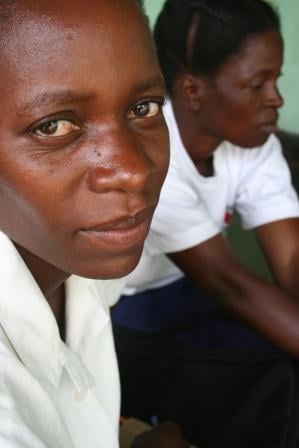A five-country study by the Southern African AIDS Trust (SAT) in partnership with the Health Economics and AIDS Research Division (HEARD) at the University of KwaZulu-Natal did just that, and the picture that has emerged is more complex than many prevention programmes targeting youth have allowed for.
“Life is complicated so our prevention interventions need to find ways to engage with these complexities,” Jo Vearey, who is coordinating the regional research project, told delegates at the HIV/AIDS in the Workplace Research Conference in Johannesburg on 10 November.
While a growing number of children who were born with HIV are surviving into adolescence, the majority of young people acquire the virus through sex, and young women are at particular risk. The overall prevalence of HIV among youth (aged 15-24) in southern Africa is about 1 percent in males and 3 percent in females, but in some countries it is much higher.
In general, efforts to reduce HIV infections in young people in the region have not succeeded, said Vearey. “We need to acknowledge that, take a deep breath and move forward.”
“Key drivers”
According to a 2006 Think Tank Meeting on HIV prevention held by the Southern African Development Community, the “key drivers” of HIV transmission in southern Africa are multiple and concurrent sexual partnerships (MCPs), intergenerational sex, and low levels of male circumcision in the context of infrequent and inconsistent condom use.
The aim of the SAT study was to find out whether knowledge of these key drivers has filtered down to community-based organizations and the young people they work with. Local research teams talked to over 400 young people in Malawi, Mozambique, Tanzania, Zambia and Zimbabwe as well as organizations providing HIV prevention programming in their communities.
“We didn’t ask questions around sexual behavior; we asked broad questions about what they thought was driving HIV and that came through,” Vearey told IRIN/PlusNews.
Female respondent from Zambia |
Extra-marital sex was described by the youth as one of the leading causes of HIV in their communities, especially relationships between young girls and older married men. Peer pressure was cited as a factor that encouraged young people to have sex, and in some cases to have sex in order to access material goods such as clothes and cell phones.
Young people identified unemployment and a lack of financial security as reasons why young women in particular made unsafe sexual decisions, but also made links between their desire to explore their sexuality and HIV risk.
Vearey pointed out that much of the discourse around HIV prevention has positioned young women as vulnerable and disempowered. “We’re seeing a different discourse presented by women themselves and we need to listen to them,” she said. “Young women described how they made decisions to have sexual relationships, often with older men with money… They might not have all the choices they’d like to have, but they still make a choice. We need to tap into that agency and help women make safer decisions.”
The research also brought up the need to address some of the misconceptions and myths that young people have around HIV. For example, some believed that condoms contained worms and others that male circumcision provided total immunity from HIV.
Knowing your epidemic
Young people’s knowledge about HIV/AIDS and the decisions they made about sex were influenced by a whole range of factors including age, gender, education level and geography.
While young people in all five countries used condoms inconsistently, the reasons they gave were different. For example, young Zimbabwean women said they feared being caught carrying condoms and preferred the pill because they were more concerned about pregnancy. Meanwhile, young people in Mozambique said they used condoms depending on the availability of their preferred flavoured brand.
| Read more | |
"We know that one size fits all doesn't work," said Vearey. "I think we should be looking [at developing] skeleton programmes and then incorporating particular issues on the ground."
Vearey and her colleagues are currently engaged in a second round of research that is trying to better understand the decisions young people make around sex. "So far the research has raised more questions than answers," she said.
ks/cb
This article was produced by IRIN News while it was part of the United Nations Office for the Coordination of Humanitarian Affairs. Please send queries on copyright or liability to the UN. For more information: https://shop.un.org/rights-permissions
